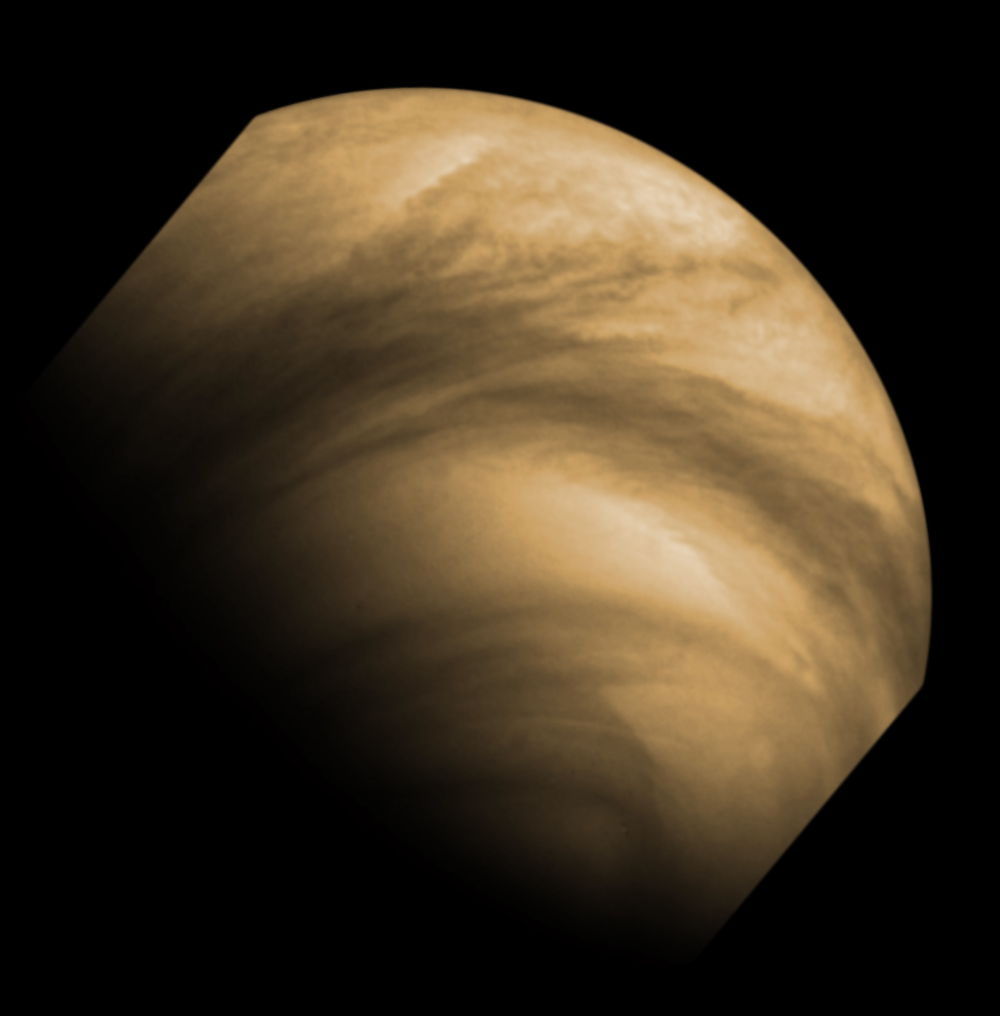Hellish Venus Dried Out Because It's Closer to Sun

Taking a closer look at the history of Venus, including how the planet transformed into a hellish hot house, may help astronomers predict the evolution of alien worlds, scientists say.
Ultraviolet rays from the sun sapped Venus' atmosphere of water during the planet's evolution, keeping it in a "prolonged molten state" for longer than Earth's molten state, a team of Japanese scientists has found.
Venus' vastly different environment came because it formed closer to the sun than Earth did, the researchers said.
With alien planets now a planetary-science frontier, studying Venus — which is within easy reach of Earth — will give clues about what to look for in exoplanet surfaces, they added. [Amazing Photos of Venus, the Second Planet]
"In a situation such [that] a magma ocean sustains very long, the planets are covered with a thick atmosphere. Therefore, unfortunately, it would be difficult to observe their surface temperatures directly," said Keiko Hamano, a planetary scientist with Tokyo University who led the research.
"According to previous studies, however," he added, "hot atmospheres could contain unique species, such as alkali- and halogen-bearing gases. So, we hope to recognize hot surfaces indirectly by detecting their signatures on future missions."
Planet of love to planet of lava
Sign up for the Live Science daily newsletter now
Get the world’s most fascinating discoveries delivered straight to your inbox.
Venus and Earth were once considered twin planets because they are close in size. Venus was named after the ancient Roman goddess of love, and early-20th-century science-fiction writers portrayed Venus as a jungle- and life-filled planet suitable for humans to visit.
Cold reality set in with the Space Age, after radio telescopes and spacecraft showed the planet’s surface temperatures actually reached an ovenlike 800 degrees Fahrenheit (427 degrees Celsius). Spacecraft pictures revealed a cloud-shrouded world with a runaway greenhouse effect taking place below — a place where volcanoes erupt and lava flows.
All terrestrial planets look like this in the early stages of evolution, the Japanese scientists wrote. The planets begin evolving when the magma ocean solidifies, which provides the initial conditions for the mantle to differentiate from the planet's crust.
Additionally, volatiles, such as water, are distributed inside the planet, allowing the mantle to turn solid because water affects its thickness.
"The timing of the end of this phase also determines the starting point for subsequent events, such as water ocean formation, and possibly the onset of plate tectonics and the development of life," scientists wrote in the Venus study, which was published in Nature today (May 29).
Classifying the planets

The researchers then delineated the difference between what they call a Type I planet, which is similar to Earth, and a Type II planet.
The magma ocean solidifies within a few million years on Type I planets, allowing them to keep any water they received during their formation and, eventually, create oceans. On Earth, this probably took about 4 million years, the model indicates.
Type II planets, which are closer to their host star, receive more solar radiation, and their magma oceans stay put for longer — perhaps for as long as 100 million years, the researchers said. These planets also dry out due to hydrodynamic escape, in which lighter molecules (driven by heat) leave the planet for space.
At an average distance of 67 million miles (108 million km) from the sun, Venus is straddling the line between where Type I and Type II planets are predicted to form, the researchers added. However, its dry surface and mantle are consistent with Type II planets, which probably places it in that category.
It's hard to say, however, if Venus and other terrestrial planets would have received any water from comets or other sources early in their history, Hamano wrote in an email to SPACE.com. It would take more observations of alien-planet systems to determine how water arises, he said.
"There seems to be no consensus about initial endowment of water on terrestrial planets or its variety," Hamano said.
"If we can measure [the] frequency of molten terrestrial planets with respect to orbital distance and age, [we] might be able to put some constraints on what initial amount of water is common to terrestrial planets, especially in the inner zone, and possibly what processes mainly contribute to water endowment of planets."
This story was provided by SPACE.com, a sister site to LiveScience. Follow Elizabeth Howell @howellspace, or SPACE.com @Spacedotcom. We're also on Facebook and Google+. Original story on SPACE.com.

Elizabeth Howell was staff reporter at Space.com between 2022 and 2024 and a regular contributor to Live Science and Space.com between 2012 and 2022. Elizabeth's reporting includes multiple exclusives with the White House, speaking several times with the International Space Station, witnessing five human spaceflight launches on two continents, flying parabolic, working inside a spacesuit, and participating in a simulated Mars mission. Her latest book, "Why Am I Taller?" (ECW Press, 2022) is co-written with astronaut Dave Williams.










